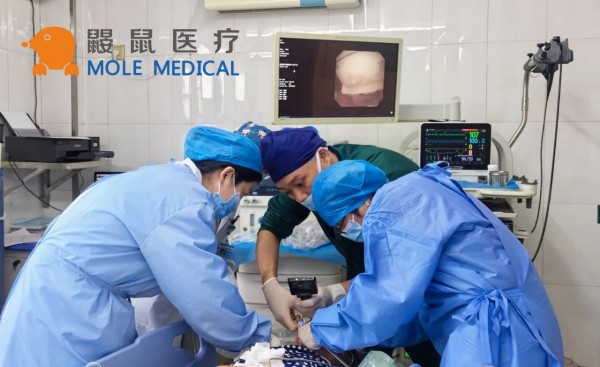Mole Medical’s Solutions in Video Intubation Devices
Feb 19, 2024
In the realm of medical technology, video intubation devices have revolutionized the way healthcare professionals approach various diagnostic and therapeutic procedures. Mole Medical, a pioneering manufacturer in this field, has been at the forefront of developing state-of-the-art devices such as laryngoscopes, bronchoscopes, and ureteroscopes. This blog will delve into the working principles, advantages, and applications of these video intubation devices, shedding light on how they contribute to the advancement of medical practices.
Laryngoscope: Illuminating the Path to Precision
1.1 Working Principle:
The laryngoscope is a crucial tool used in endotracheal intubation, enabling healthcare providers to visualize and navigate the airway during intubation procedures. Unlike traditional laryngoscopes, video laryngoscopes incorporate a miniature camera at the tip of the instrument. This camera captures real-time images of the patient’s airway, displaying them on a monitor for enhanced visualization.
1.2 Advantages:
One of the key advantages of video laryngoscopes is the improved visualization they offer, especially in challenging intubation scenarios. The camera-equipped design allows healthcare professionals to navigate anatomical variations with greater precision, reducing the risk of complications. Additionally, video laryngoscopes often feature ergonomic designs, making intubation procedures more comfortable for both the patient and the medical practitioner.
1.3 Applications:
Video laryngoscopes find applications in various medical settings, including emergency departments, operating rooms, and intensive care units. Their versatility makes them invaluable in cases where traditional direct laryngoscopy may prove challenging. The enhanced visualization provided by these devices contributes to safer and more efficient intubation procedures.

Bronchoscope: Navigating the Pulmonary Landscape
2.1 Working Principle:
Bronchoscopes are video intubation devices designed to explore and visualize the bronchial tree and lungs. Mole Medical’s bronchoscopes feature a flexible insertion tube equipped with a miniature camera, lighting system, and channels for additional tools. The camera transmits images to a monitor, allowing healthcare professionals to assess the pulmonary system in real-time.
2.2 Advantages:
The flexibility of bronchoscopes facilitates navigation through the complex anatomy of the respiratory tract. Video bronchoscopes provide detailed images, aiding in the detection of abnormalities such as tumors, inflammation, or foreign bodies. Additionally, the ability to pass through narrow airways and reach peripheral bronchi makes video bronchoscopy an invaluable diagnostic tool.
2.3 Applications:
Bronchoscopes are widely used in pulmonology for diagnostic and therapeutic purposes. They play a crucial role in the assessment of respiratory conditions, including chronic bronchitis, pneumonia, and lung cancer. Bronchoscopes also enable procedures such as bronchoalveolar lavage and transbronchial biopsies, contributing to a comprehensive understanding of pulmonary diseases.
Ureteroscope: Illuminating the Urinary Tract
3.1 Working Principle:
Ureteroscopes are video intubation devices designed for exploring and treating the urinary tract, specifically the ureters and kidneys. Mole Medical’s ureteroscopes feature a slim, flexible tube with a built-in camera and lighting system, allowing for visualization of the urinary system. The real-time images captured by the camera are displayed on a monitor, guiding medical professionals during diagnostic and interventional procedures.
3.2 Advantages:
Video ureteroscopes offer superior visibility and precision in diagnosing and treating conditions affecting the urinary tract. The flexibility of the device allows it to navigate the twists and turns of the ureter, providing detailed images of the kidney and facilitating procedures such as stone removal, biopsy, and stent placement.
3.3 Applications:
Ureteroscopes are essential tools in urology, playing a pivotal role in the diagnosis and treatment of various urological conditions. Common applications include the removal of kidney stones, evaluation of ureteral strictures, and the diagnosis of tumors or infections in the urinary system. The non-invasive nature of video ureteroscopy makes it a preferred choice for many urological procedures.
Market Needs: A Growing Demand for Precision and Safety
4.1 Addressing the Need for Precision:
The demand for precise diagnostic and therapeutic interventions has been a driving force in the market for video intubation devices. Healthcare professionals require tools that provide enhanced visualization during procedures such as intubation, bronchoscopy, and ureteroscopy. The traditional methods, though effective, often face limitations in navigating complex anatomies, thereby necessitating more advanced and precise solutions.
4.2 Catering to Safety Concerns:
Patient safety is a paramount concern in healthcare. Video intubation devices have become indispensable in minimizing risks associated with traditional methods. The ability to visualize the airway, bronchial tree, and urinary tract in real time significantly reduces the chances of complications, providing a safer environment for both patients and medical practitioners.
Challenges in Video Intubation
5.1 Complex Anatomies and Procedures:
One of the primary challenges in the market is posed by the complexity of anatomical structures involved in procedures like intubation, bronchoscopy, and ureteroscopy. Traditional devices may struggle to navigate intricate pathways, leading to increased difficulty and potential risks during these procedures.
5.2 Limited Visibility:
Inadequate visibility is a common challenge, especially in emergency scenarios or when dealing with patients with challenging airway anatomy. Insufficient lighting or obscured views can hinder the effectiveness of procedures, leading to potential complications and delays.
5.3 Training and Skill Variability:
The proficiency required to use video intubation devices effectively can vary among healthcare professionals. Ensuring standardized training and skill development across diverse medical settings is a challenge that needs to be addressed to maximize the benefits of these advanced devices.
Mole Medical’s Solutions
6.1 Innovative Designs for Enhanced Precision:
Mole Medical has tackled the challenge of precision by incorporating cutting-edge technology into its video intubation devices. The laryngoscope, bronchoscope, and ureteroscope feature high-definition cameras, allowing healthcare professionals to visualize anatomical structures with unparalleled clarity. The innovative designs of these devices aid in achieving precise navigation, overcoming the limitations of traditional methods.
6.2 Integrated Lighting Systems:
Addressing the challenge of limited visibility, Mole Medical’s devices are equipped with advanced lighting systems. These systems ensure optimal illumination of the target areas, even in challenging conditions. Enhanced visibility contributes to better decision-making during procedures, reducing the likelihood of errors and complications.
6.3 User-Friendly Interface and Training Programs:
Recognizing the variability in training and skill levels, Mole Medical has developed user-friendly interfaces for their video intubation devices. Additionally, the company offers comprehensive training programs to healthcare professionals, ensuring that they are proficient in utilizing the devices to their full potential. Standardized training enhances the adoption of these devices across diverse medical settings, fostering a more consistent and proficient approach.
Conclusion
Mole Medical’s commitment to innovation has propelled video intubation devices into a new era of medical precision. The incorporation of advanced technologies in laryngoscopes, bronchoscopes, and ureteroscopes has not only enhanced the accuracy of diagnostic and therapeutic procedures but has also improved patient outcomes. As these devices continue to evolve, healthcare professionals can look forward to further refinements in video intubation technology, ultimately transforming the landscape of medical practices for the better.
Categories
Latest Articles

Disposable Nephroscopes: Redefining Safety & Efficiency in Urology
Introduction The shift towards minimally invasive urological surgery has found a pivotal ally: the disposable nephroscope. As traditional reusable scopes grapple with persistent biofilm contamination risks and soaring sterilization costs, the global medical community is rapidly adopting single-use solutions. This article analyzes the clinical value, technological evolution, and dynamic innovation landscape driving this transformative shift. ... Read more

Disposable Video Laryngoscope Blades: The Ultimate Solution for Preventing Cross-Contamination
In the operating room, as the cold light of a video laryngoscope illuminates a patient’s airway, an age-old medical challenge is being redefined: How can life-saving instruments avoid becoming vectors of infection? Jiangsu MoleMedical drives an innovative safety revolution—replacing reusable devices with single-use, sterile laryngoscope blades that create a pure barrier for critical airways. Traditional video ... Read more
-2.jpg)
FDA & CE Approved Video Laryngoscope: What Makes It Stand Out?
Introduction In high-pressure emergencies and precision-driven operating rooms, video laryngoscopy is revolutionizing airway management. Mole Medical’s FDA and CE-certified technology replaces tactile-dependent “blind intubation” with real-time visual navigation – enhancing safety, accuracy, and clinical outcomes worldwide. Why Certification Matters Mole Medical’s dual certifications validate its global compliance and performance: FDA Clearance: Rigorous validation of safety/efficacy ... Read more

Mole Medical Showcases Advanced Endoscopy Solutions at CMEF Autumn 2025, Driving Global Partnerships
Guangzhou, China – September 26-29, 2025 – The 92nd China International Medical Equipment Fair (CMEF Autumn) concluded successfully on September 29th at the Canton Fair Complex in Guangzhou. Mole Medical Technology Co., Ltd. (Mole Medical) made a significant impact at the event, drawing global medical professionals and partners to its booth (Hall 2.1, Stand Q24) ... Read more

How to Use Disposable Ureteroscopes Safely and Efficiently
In the field of urology, the application of disposable electronic ureteral-kidney pelvis endoscopy catheters is leading the technological innovation in minimally invasive surgeries. According to the 2024 multi-center research data from China’s urology department, among the over 5,000 surgeries included, the patient group using disposable catheters performed significantly better in key indicators such as operation ... Read more



